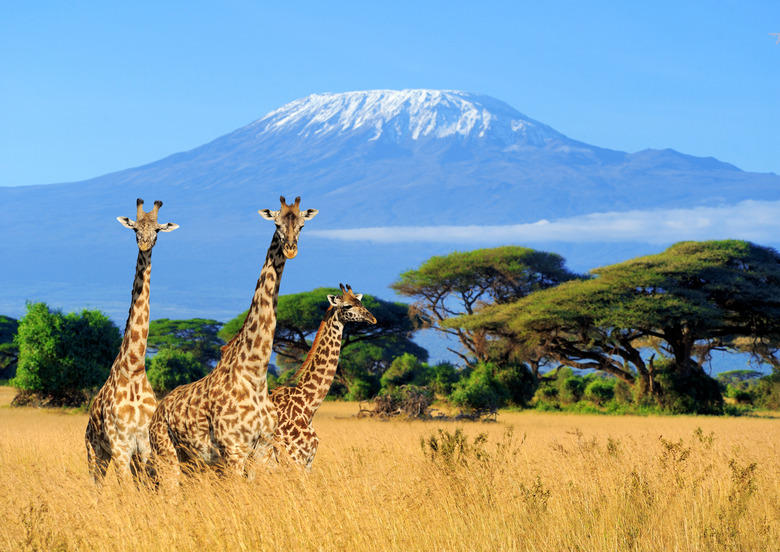How Do Giraffes Communicate?
How Giraffes Communicate
The giraffe (Giraffa camelopardalis) is the world's tallest mammal, standing as tall as 18 feet. They live in herds of anywhere from 5 to 20 giraffes. Within these herds, giraffes do communicate with one another, although they are often thought to be silent animals.
Humans cannot hear most of the communication between giraffes because they communicate infrasonically, with moans and grunts too low for humans to hear. Mother giraffes sometimes use whistles to warn or call their young.
Other ways giraffes communicate are with their eyes and by touching other giraffes in the herd. As any observer of giraffes at a zoo will tell you, giraffes can communicate many different emotions with their big brown eyes. In wild herd, giraffes may use prolonged stares to warn predators to stay away from young calves or to warn other herd members of danger, for example.
Giraffes do not touch one another much, even though they live in close proximity. Although they share some characteristics with elephant herds, they do not share the touchy-feely close-knit relationship that elephant families share. Instead, giraffes only touch occasionally. Mother giraffes may nuzzle and stroke their calves to show affection or for training the calf in where to find food or avoid danger.
Another occasion when giraffes touch one another is in a ritual called "necking." This is a form of sparring between male giraffes. The purpose is for one giraffe to show dominance over the other. The two giraffes stand with their feet spread apart and wrap or rub their necks with one another. The dominance dance may grow more serious and rough at times. At other times, the two male giraffes seem to lose interest and just walk away.
Infrasonic Communication
Infrasonic Communication
Infrasonic communication simply means that giraffe's talk to one another with sounds that are extremely low pitched, low frequency. The frequency is so low that the human ear cannot hear the sounds. However, in recent years, scientists have been able to record giraffes and whales with special recording equipment and listen to these sounds with computers.
One of the distinct features of infrasonic communication is that it can travel over longer distances than higher pitched sounds. It is thought that animals may be able to communicate with other animals several miles away. This can become vital to warn of danger.
Why Giraffes Communicate
Why Giraffes Communicate
Giraffes communicate for a wide variety of reasons. Male giraffes cough when calling to a female giraffe for mating. Giraffes must warn other herd members of danger. There may be even more ways that giraffes communicate, as scientists are just learning more about infrasonic communication and the intricate details of this fascinating species.
Cite This Article
MLA
Soard, Lori. "How Do Giraffes Communicate?" sciencing.com, https://www.sciencing.com/giraffes-communicate-4567917/. 13 March 2018.
APA
Soard, Lori. (2018, March 13). How Do Giraffes Communicate?. sciencing.com. Retrieved from https://www.sciencing.com/giraffes-communicate-4567917/
Chicago
Soard, Lori. How Do Giraffes Communicate? last modified March 24, 2022. https://www.sciencing.com/giraffes-communicate-4567917/
